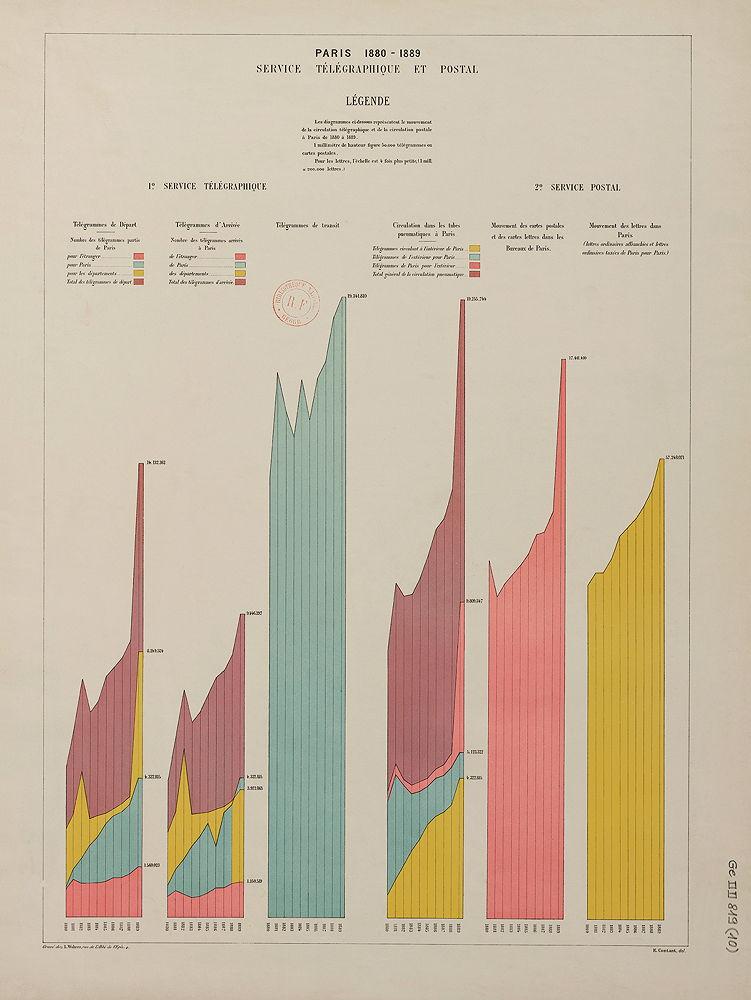Displaying statistical knowledge in the late 19th and early 20th centuries
Over the last twenty years graphic visualisation has become a core tool for observation, analysis and communication in the field of data science. Far from being a purely contemporary phenomenon linked to the rise of digital cultures and humanities, the development of techniques of data visualisation was at the heart of a vast movement of reconfiguration of scientific and technical bodies of knowledge that began burgeoning as long ago as the 1870s. This article explores the influence of statistical thinking in the visual culture of the late 19th and early 20th centuries, with particular emphasis on the importance of the photographic model in the scholarly discourses guiding the application of the “graphic method” to statistics. It looks afresh at one of the main epistemological and technical issues raised by this kind of project: the “material expression of abstractions”. The article thus shows to what extent statistics in its visual forms and the repeated attempts to popularise its uses – via graphical charts, wall diagrams and statistical relief diagrams – were closely modelled on other reproducible visual media, including photography, typography and graphic design.

Jacques Bertillon, Album de statistique graphique. © Bibliothèque nationale de France, département des Cartes et plans, Paris.
Claire-Lise Debluë is a postdoctoral researcher at the University of Lausanne. Author of a book based on her thesis on the history of exhibitions (Exposer pour exporter. Culture visuelle et expansion commerciale en Suisse (1908-1939), Alphil/Presses Universitaires Suisses, 2015), she is currently researching the history of graphics and the profession of graphic designer, with a particular interest in the history of data visualisation.
Keywords: graphic statistics, scientific image, popularisation of knowledge, data visualisation, material history
Citation: Claire-Lise Debluë, « De l’‹ image numérique › à la photographie. Exposer les savoirs statistiques au tournant du XXe siècle », Transbordeur. Photographie histoire société, no. 2, 2018, pp. 54-65.